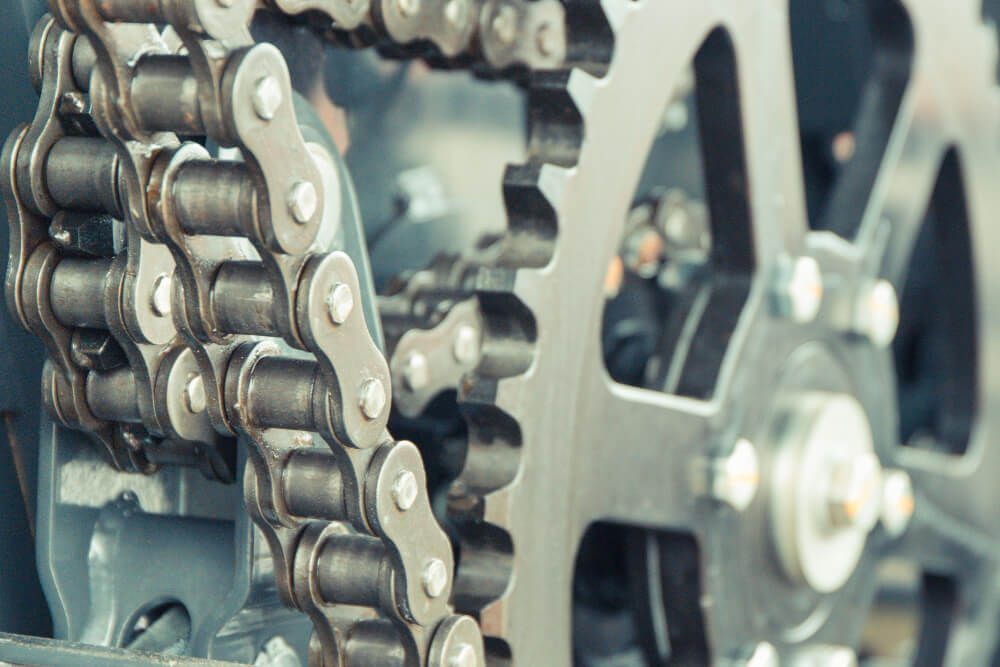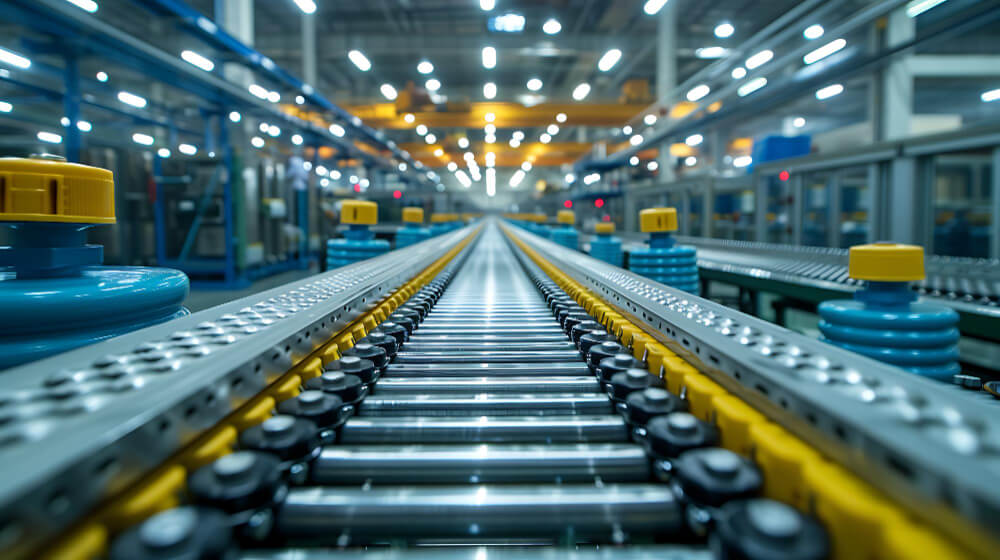Roller chains are a core component of the mechanical world. From powering bicycles to driving industrial machinery, their simple yet strong design transmits power efficiently and reliably.
But what exactly makes up a roller chain? A roller chain is made up of inner and outer plates, pins, bushings, rollers, side plates, and more.
Let’s delve into the chain construction and explore the key parts that keep everything running smoothly.
The Industrial Chain Construction
Roller chains are constructed using a precise arrangement of components that work in harmony to transmit power:
Inner and Outer Plates
The inner and outer plates form the main structural elements of the chain. They are typically made of high-quality alloy steel, which provides excellent strength and wear resistance. The plates are designed with specific contours and perforations to accommodate the other components and allow smooth articulation.
Pins
Pins are cylindrical metal rods that connect the inner and outer plates. They serve as the pivot points, allowing the chain to flex and articulate during operation. The pins are precision-machined and heat-treated to ensure optimal strength and durability.
Bushings
Bushings are cylindrical sleeves that fit inside the chain’s inner plates. They serve as bearings for the rollers and help reduce friction during motion. Bushings are usually made of hardened steel or self-lubricating materials to enhance longevity and minimize wear.
Rollers
Rollers are the key elements that enable smooth engagement with sprockets and facilitate efficient power transmission. They are cylindrical and are positioned between the inner plates.
The rollers rotate on the bushings, reducing friction and wear on the chain and sprockets. High-quality roller chains feature precisely manufactured rollers to ensure consistent and reliable performance.
Roller Chain Parts
Side Plates
Side plates are positioned on the outer sides of the chain and provide additional protection and support to the inner components. They help maintain the integrity of the chain by preventing lateral movement and ensuring proper alignment with the sprockets.
Clearances
Roller chains are designed with specific clearances between the pins, bushings, and rollers. These clearances allow for lubrication to penetrate the critical areas, reducing friction, heat, and wear. Proper lubrication is essential for the smooth and efficient operation of roller chains.
Preloading
Preloading refers to the tension applied to the chain during assembly. It ensures that the chain remains engaged with the sprockets, preventing disengagement and skipping. Adequate preloading is crucial for reliable power transmission and preventing premature wear.
Surface Treatment
To enhance corrosion resistance and extend the service life of roller chains, various surface treatments are applied. These treatments include coatings like zinc plating or nickel plating, which provide a protective barrier against moisture, chemicals, and other environmental factors.
Get in touch with us today and let Universal Chain be your trusted partner in understanding roller chain construction and components, guaranteeing the smooth and efficient operation of your machines for years to come.


